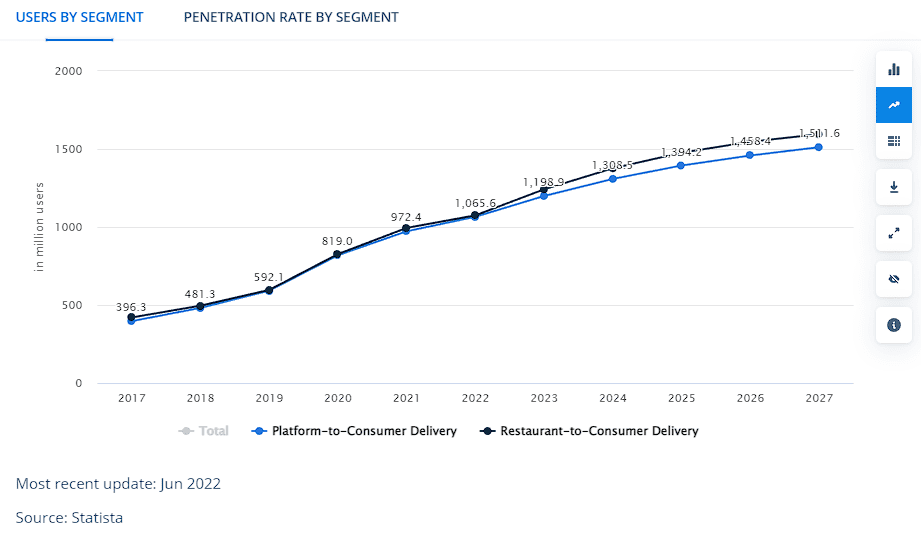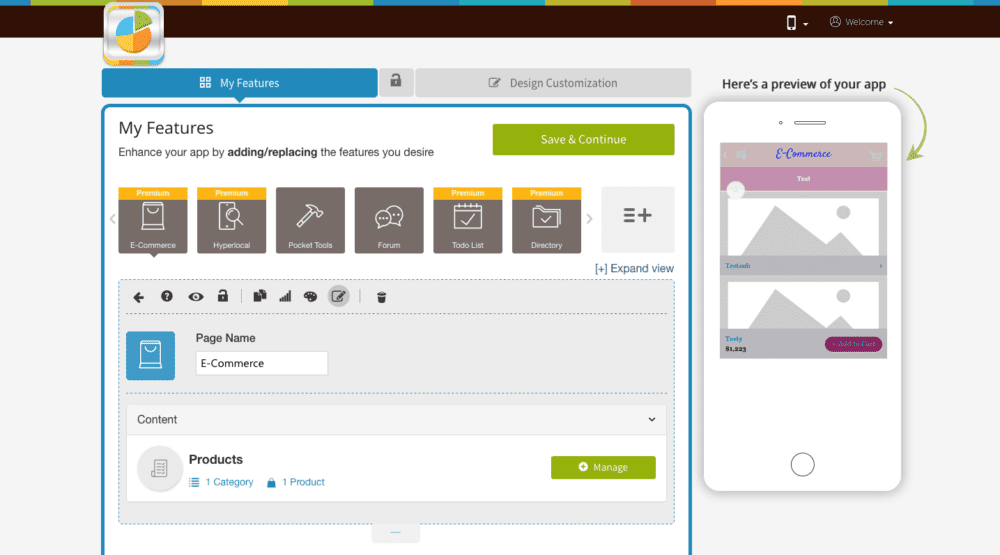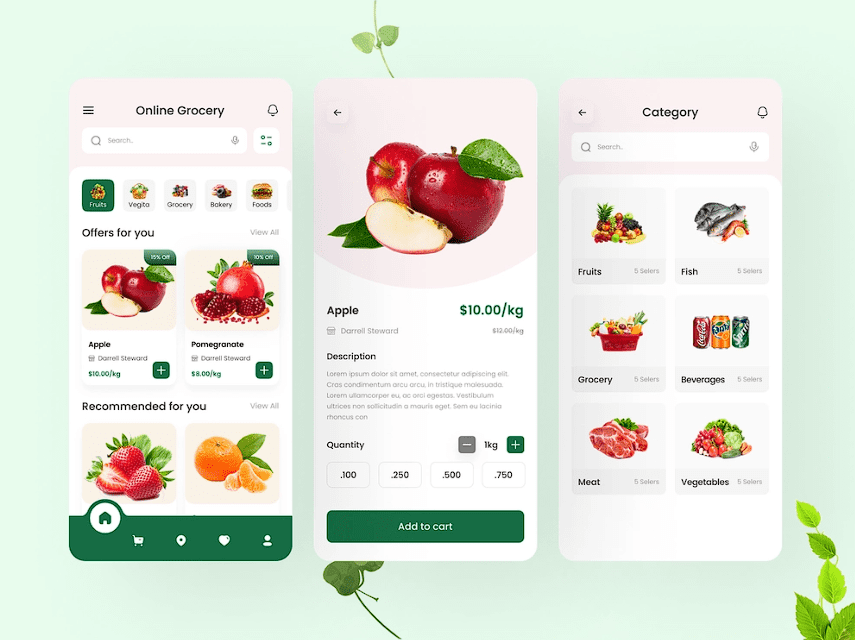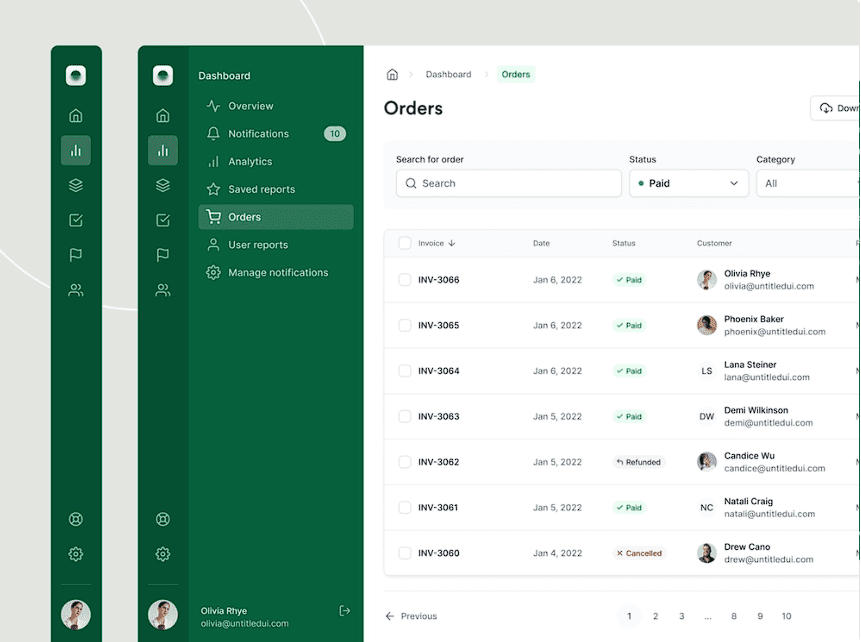I am Nikita Grogolev, a mobile development guru at Brivian. In this article, I’ll tell you about the delivery app development approaches. Specifically, we’re going to talk about:
✔️ food delivery apps,
✔️ the technical stack for developing one,
✔️ who is leading the market,
✔️ the main features that no food delivery app can be without.
What is a delivery app?
A food delivery service is an intermediary between the customer and the product they need. It can be an app for a specific place, or it can be an aggregator where you can, for example, order food from hundreds of different restaurants. The range of on-demand delivery services can be broad and include services such as clothing, shopping, medicine, etc. Most people only think of on-demand apps in terms of food delivery. In the delivery app, the customer can select an item and order it, the seller will see this, and the courier can pick up this order to deliver it.Being a delivery app owner is profitable! Here’s what Statista tells us about the food delivery app market in 2022:
- Revenue in the online food delivery segment is projected to reach $339,257 million in 2022.
- The online food delivery segment is expected to have 2,655.9 million users by 2026.
 Here’s how delivery app users will grow by 2026, according to Statista.
Here’s how delivery app users will grow by 2026, according to Statista.
How to build a delivery app fast?
There are 3 ways to develop a mobile app.- No code (or zero code), when there is a need to know programming languages and write code to create a product. This is, for example, the website builder Webflow, where the user places blocks of content, customizes the animation, and receives a finished site.
- Low code is something between zero coding and programming: you still have to write code, but not all of it.

That’s what the interface in Appy Pie looks like.
But of course, this approach has its own disadvantages, otherwise, everyone would start riveting their sites and applications on the builders.The basic thing — you won’t own the app completely. You will be making the application on the platform, which means the intellectual property will belong to the platform. If you want to download the site and upload it to your hosting, you are unlikely to succeed. The same goes for additional services in the constructor: if you forget to pay the rate, the site will essentially disappear from the Internet.
Secondly, it’s not free. You will need to pay once every certain period of time, depending on the tariff. It doesn’t suit everyone to make a regular payment. Paying for service doesn’t have to be very expensive, but if you plan to make your app gradually, it makes more sense to save that money for developing your own app than to pay a third party for years.
Third, scalability. The design of your product is limited by the constructor’s functionality and will not be individual. The application needs to evolve and be supplemented with new features, and it’s much harder to do this with a constructor. If you want to add new features, you will have to wait for a platform update, which may not fit your business plan. Also, constructors don’t use large servers that can handle high loads. You will have to pour a lot of money into it constantly to keep the product working.
As you can see, these approaches can be a good option in specific cases, but if you want to make your app more individual and more high-performance, we recommend shifting your focus to the classic step-by-step approach. In this case, designers create layouts to develop an app, developers write code, testers check it for bugs, and other stages of full-cycle app development. But where to start?
Three sides of delivery apps
A delivery app needs to be intuitive and user-friendly for different users. Let’s talk more about them and find out which features are must-haves for each side.❗️ Client-side
✔️ Registration. If the user has an account in the app, you can give him bonuses for purchases and promo codes. This helps retain the user in the app. Make sure the registration form is not too long and there is a possibility of authority through a phone number or social networks.✔️ Catalog. The users need the ability to choose from a list of places. Search bars, filters, and ratings can help them with that.
 An example of smooth design. Source: Dribbble.com.
An example of smooth design. Source: Dribbble.com.
✔️ Order Tracker. The users will appreciate it if they can track their orders and not have to worry if everything is okay.
✔️ Feedback. Leave it up to the users to communicate with both the company and the courier to find out about updates and issues with their orders. ✔️ Push notifications. They’re needed to keep customers informed about where their order is and share promo codes to increase retention rates.
❗️ Restaurant side
✔️ Registration. It will allow companies to join the delivery platform and add all necessary information: name, location, opening hours, and contacts.✔️ Administrative panel. This will allow restaurants to view incoming orders and inform customers about the status of their orders.
 An example of a delivery app for restaurants. Source: Dribbble.com.
An example of a delivery app for restaurants. Source: Dribbble.com.
✔️ Search for the nearest courier. The application must have the ability to track the location of the courier from the moment of receipt until the successful delivery of the order.
✔️ Push notifications. They help to inform couriers when an order is ready for pickup.
✔️ Payment menu. Allows to create invoices in the app and send them to customers.
❗️ Courier side
✔️ Registration. Yes, again 🙂✔️ Order database. This is where couriers track orders in real-time.
✔️ Delivery status. It helps users to know that the order, for example, ready for delivery, in transit, is delivered.
✔️ Order history. With it, the user can see the completed orders and payments.
✔️ Communication. Communication features will allow couriers to communicate with both the courier and the restaurant and send delivery updates.
How to build a delivery app?
Now that we have figured out the development methods and the main features of a food delivery app, we can talk about the steps of building a delivery app.1️⃣ Business analysis
First, you need to study the market, its scale, and its competitors. This analysis helps determine the target audience, as well as the disadvantages of other companies’ apps. If you check the app store reviews, you can find a lot of tips on how to make your app better, and what features to add that your competitors don’t have. Use these and people will be happy! If you want to learn how to create a delivery app to make money, studying what the marketplace offers is the most important step. There are many ways to monetize an app:- subscription plans,
- service fees (% of order value covers delivery costs),
- advertising (through banners, videos, native ads, cross-page ads, motivated ads),
- e-commerce and merchandising.
2️⃣ UI/UX design
The designer makes the wireframes to work out the basic logic of the application. The designer then adds colors, fonts, and animations to the screens — this approach helps create beautiful and user-friendly interfaces.3️⃣ Development
The development process includes working on the frontend and backend parts of your app. The front end is for the part that the user can see, and the back end is for the server part. You can make your app cross-platform or native. Cross-platform development allows us to develop apps for iOS and Android using one code and one development team. This is a good solution if you want to quickly develop an app and test it in the market. But if you want your app to have a wide range of functionality, complex design, and high performance — look at native development.4️⃣ QA testing
By combining manual and automated testing, QA engineers make sure your product works properly on all devices. We also perform load tests to determine how much load your app can handle.5️⃣ Post-release support
Of course, the work doesn’t end once your product is developed. The application needs post-release support after release. It is important if you want your application not to drift on its own, but will be under the control of experienced developers. So, just in case there are bugs, you’ll need a developer to fix them quickly. Also, post support includes adding new features.Conclusions
The delivery app market includes many players, but there is still plenty of room. The market is not monopolistic, only in the United States there are 5 significant companies that share the market — UberEats, DoorDash, Caviar, Grubhub, and Postmates. The UK also has Just Eat and Deliveroo, and China, which has the largest market for food delivery services in the world, has Meituan.If you are interested in an on-demand delivery app, now is the best time to start implementing your ideas. There are many obstacles and questions during the creation of a delivery app, such as which features to choose, how to monetize the idea, etc. The solution is to hire a reliable contractor.
At Brivian, we develop native and cross-platform apps. Together we can go through the process of app development from the first meeting and competitor analysis to the release of your app in the App Store or Google Play. If you are not yet confident in your plans and have questions, you can contact us for advice. Leave a message to our manager by filling out the form here, and we will get back to you soon.